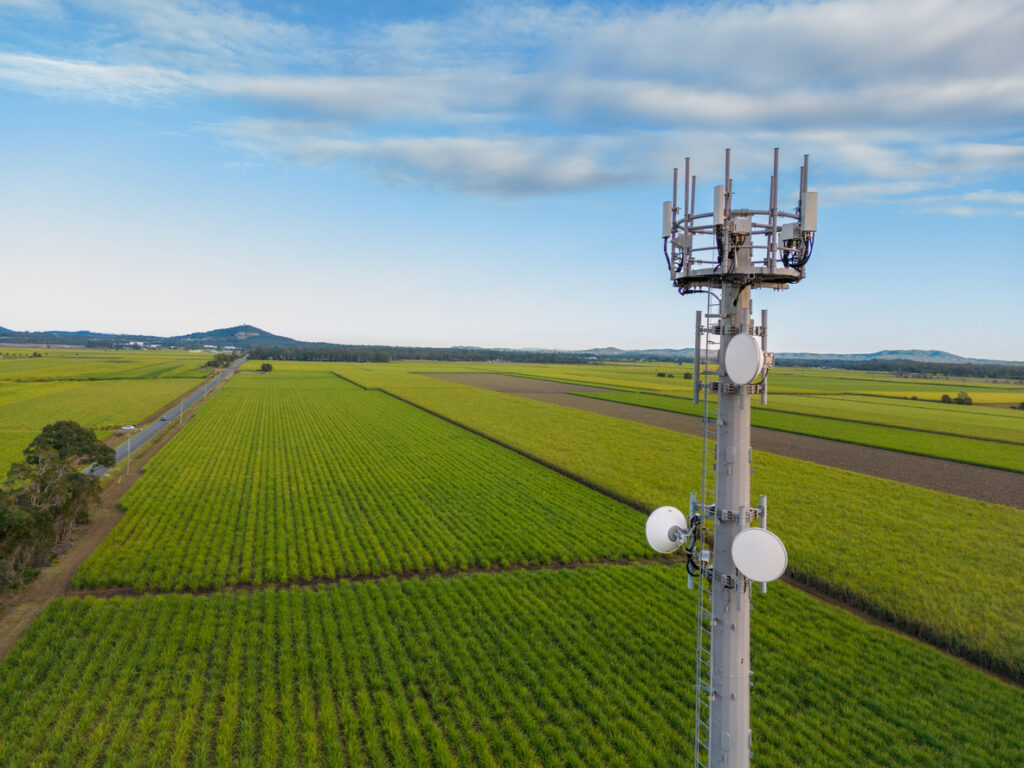All businesses need connectivity, but not all businesses need the same connectivity. For some organizations, connectivity is as basic as the pens and staplers in the supply closet—it’s needed simply to allow access to email, basic software-as-a-service (SaaS) applications, and other low-bandwidth and uncomplex services. Other enterprises require highly sophisticated hybrid/multi-cloud connectivity with stringent security and compliance controls, ultrafast performance, and high availability. The vast majority of businesses fall somewhere in between these two extremes. It’s logical, therefore, to assume that the type of connectivity needed will be different at different points along this spectrum. So, how can you ensure you have the right kind of connectivity for your business?
There are lots of different connectivity types
First, it’s important to understand the difference between wide-area network (WAN) connectivity and Internet connectivity. Internet connectivity enables access to the public Internet, whereas a WAN connects geographically dispersed sites or networks within a business, and may or may not include Internet access.
There are different kinds of WAN connectivity, including:
- MPLS—a hardware-based private network solution that relies on a shared network infrastructure
- Point-to-point—a dedicated, private network connection that directly links two locations
- SD-WAN—a virtualized software-based approach that offers a wide range of deployment models and connectivity options (to learn more, read SD-WAN 101: A Guide for Getting Started)
Likewise, there are multiple types of Internet connectivity. There are wired Internet connections, such as:
- Direct internet access (DIA)—a dedicated, high-speed connection that’s symmetrical (i.e., upload and download speeds are the same)
- Broadband—a shared connection that spreads bandwidth across multiple users, which can lead to performance fluctuations
There are also different kinds of “wires” that the data is transmitted through, including:
- Fiber optic—Glass or plastic fibers through which data is transmitted via light pulses
- Cable—Uses the coaxial cables from cable TV
- Digital subscriber line—Uses copper telephone lines
And there are wireless connections, including:
- Satellite—Transmits data via communication satellites
- Cellular—Uses mobile networks, such as 5G and LTE
- Fixed wireless—Uses radio waves to transmit data between a central antenna and a receiver
These are all examples of current popular types of WAN and Internet network and connection types, but it’s by no means an exhaustive list. Already, it can be a lot of information to absorb, especially if you’re not a technology professional.
Other important considerations
Often, companies will focus primarily on speed as one of the key deciding factors. Of course, speed is important, but there are nuances that you ignore at your peril. It’s tempting to compare your options based on a speed/price metric, but this overly simplistic evaluation could result in unanticipated costs, effort, and other challenges down the line. Here are some other factors to bear in mind:
- Proximity to the infrastructure’s owner: You’ll hear the terms tier 1 and tier 2 used. A tier 1 provider owns the infrastructure, whereas a tier 2 provider purchases IP transit from a tier 1 provider or has peering agreements with other networks. Aggregators is another common name, which refers to intermediaries that connect organizations to tier 1 and tier 2 providers. One is not objectively better than the others—there can be different trade-offs depending on your specific requirements.
- Physical location and layout: Where your sites are situated can affect the connectivity options available to you, as well as how the network should be designed to optimally meet your requirements. For example, if you have a site in a remote location, wired options may not be available.
- Business continuity requirements: Interruptions in connectivity can mean interruptions in your business, and that’s never good. There are, however, different ways to ensure continuity: redundancy and diversity. Think of redundancy as a backup—if a connection fails, an alternate one takes over. If, however, there’s an outage at the carrier level, all the redundancy in the world won’t keep you connected, and that’s where diversity—a different physical connection in and out of the organization—comes in. Type 1 circuits use a single carrier for both the Internet service and the last mile, while type 2 circuits use multiple providers.
- Support requirements: What technical expertise do you have access to and what is their capacity/ability to troubleshoot issues within a time frame that is reasonable? And what does “reasonable” mean for your organization?
- Contracts and invoice management: Technology contracts can be a headache to manage, as can monthly bills—and delays and mistakes can have very expensive consequences. The challenges compound the more vendors you deal with on an individual basis.
Questions about your own connectivity needs to consider
To sort through all the options, it’s helpful understand the specific needs of your own business. Answering the following questions will give you a productive start to your connectivity provider evaluation process:
- Are you looking for the lowest possible cost, the best overall value, or the highest level of performance possible?
- What is your reliability objective? Is it 100% uptime, or is four 9s—or even three 9s—good enough?
- What is your performance objective? Are there different applications that have different requirements? Do you need a symmetrical connection, or will asymmetrical suffice?
- What is the impact to your business if your Internet goes down?
- What is your desired timeline? Is there a deadline by which you need everything up and operational?
- Are you subject to any regulatory requirements that could affect the service you select or how it’s implemented?
- How many employees will be using this connection simultaneously? What about guests or customers? Do you need public wi-fi?
- What are your growth projections for the next 1–3 years? Will you be adding employees, locations, or data-intensive applications?
- Do you currently use or plan to use cloud services extensively?
- Are there any physical barriers at your location that might impact installation? Is it a historical building? Will there be difficulty in running new cables? Is there a conduit from the street to office?
Questions to ask potential connectivity providers
Just like not all connectivity is the same, not all connectivity providers are the same. If you’ve answered the questions above, you will have a solid grasp of your organization’s needs and priorities. In addition to this baseline, here are some questions you should ask all the connectivity partners you’re evaluating to help differentiate their offerings and determine which will serve you best.
- Are these type 1 or type 2 access circuits? Who is the last-mile carrier? Do you have a direct relationship with that provider or are you going through a third-party aggregator?
- Is the service SLA-based (i.e., specific performance, uptime, or other metrics are guaranteed) or best-effort?
- Is the connection symmetrical (upload and download speeds are the same) or asymmetrical (typically uploads are slower than downloads)? If it’s asymmetrical, what is the upload speed?
- Are traditional circuits my only option (there is often an assumption that terrestrial connections are best, but this may not always be the case)? Do you have relationships with satellite, wireless, and other types of providers?
- What kinds of redundancy and diversity to you offer? Are the diverse carriers actually coming in through different fiber trenches? Can I get a drawing that represents the actual path the data takes?
- What is your average mean time to repair (MTTR) for this type of service?
- What is the escalation path for support? Do you provide runbooks?
- Do you support our entire footprint of sites, or can you only provide partial coverage?
- Do you support our entire scope of requirements or will we need to bring in additional partners for portions of it?
By asking these questions, you’ll be able to make a more informed selection. When two providers give you quotes for a 1 Gbps circuit, for example, you can evaluate them on more than just price. Perhaps Provider A’s cheaper option is the right choice for you. But maybe Provider B, despite being more expensive at the top-line level, will give you a better overall value—including saving you money as well as time and effort—over the long haul. Either way, you’ll have made the selection based on a broader range of criteria that matter to your business.
BCM One provides Managed Connectivity that meets your needs
BCM One’s Managed Connectivity streamlines connectivity across all of your locations, providing around-the-clock monitoring and simple invoice and carrier management. Starting with a plan based on your business goals and technical requirements, we develop a detailed network design aimed at reducing risk, minimizing delays, and lowering the total cost of your network deployments. We proactively monitor the health and vital signs of your network to improve service quality, reduce disruption, and mitigate outages. We aggregate your connectivity onto one invoice and manage it all so you can focus on other initiatives.
Contact us to learn more about our Managed Connectivity services.





